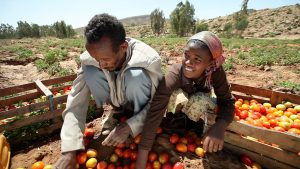Ethiopia’s rapid economic and agricultural growth over the past two decades is a well-known African success story. In 2000, Ethiopia ranked as the second-poorest country in the world, according to Oxford University’s Global Multidimensional Poverty Index. Then, thanks in large part to sustained investments in the agricultural sector, the economy grew and poverty fell. Ethiopia was the third-fastest growing country in the world from 2000 to 2018 based on GDP per capita, according to World Bank data.
The agrifood system has emerged as the backbone of this growing economy, with approximately three quarters of the labor force working in agriculture and related sectors. Ethiopia’s era of rapid agricultural transformation, however, has also presented challenges. For example, the economy is so reliant on wide scale agricultural production that the country risks overexploiting its natural resources.
In a new IFPRI book, Ethiopia’s Agrifood System: Past Trends, Present Challenges, and Future Scenarios, editors Paul Dorosh and Bart Minten present a holistic analysis of the country’s agricultural system and its long-term sustainability. Synthesizing decades worth of agricultural economic research, the book analyzes the past trends that have led to Ethiopia’s economic success, the current challenges from rapid development, and what’s at stake for the future of the agrifood system. Its conclusions draw on a diverse array of surveys, including those conducted by the USAID Feed the Future program, and the Household Income and Expenditure Survey and Annual Agricultural Sample Surveys of Ethiopia’s Central Statistical Agency (CSA).



